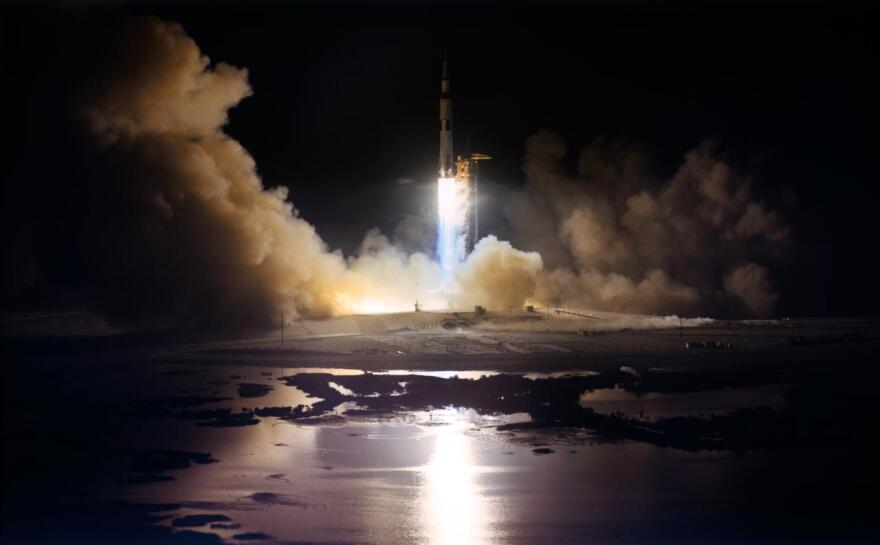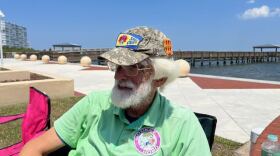A guide to the journey of America into space
The space race kicked off in 1957 with the Soviet launch of Sputnik. Not far behind was the United States and the Mercury program—the program that selected the nation’s first astronauts to journey into space.
Since that first leap, the U.S. has been advancing its exploration efforts decade after decade.
The book, Star bound, A Beginner's Guide to the American Space Program, from Goddard's Rockets to Goldilocks Planets and Everything in Between (Outward Odyssey: A People's History of Spaceflight) takes readers to the beginning of how it all started and explains key events and facts that can help anyone understand the nation’s space exploration.
The authors, Emily Carney and Bruce McCandless III, explore the social and cultural contexts surrounding the country’s most significant space milestones. McCandless III and Carney both aimed to write the book for a wide audience. Carney is the “original” Space Hipster, founding an online group of tens of thousands of space enthusiasts.
“We tried to write it in a way that was accessible to all people, whether they are very new coming into spaceflight, enthusiasm or die-hards,” Carney said. “As being the creator of Space Hipsters, I often see in the group there are people who come to the group with no knowledge about spaceflight. They're just becoming enthusiastic. Maybe they just saw a launch or something like that and that's what got them interested.”
While the space race started America’s space exploration programs and enthusiasm from the public, McCandless III said watching astronauts on the moon was the catalyst event for the nation that led to widespread public interest in space.
“That was an encapsulation, and sort of the zenith of our efforts in space up to that point,” McCandless III said. “They’ve served as a reminder, and as a sort of goal, in a way for our efforts now. Because what we did was so remarkable that people have had a hard time becoming quite as enthusiastic ever since.”
However, McCandless III said the moon landing was so grand, he believes that people have a hard time getting excited about other space endeavors like the public did during the Apollo missions. This ideology helped Bruce and Carney develop their key idea for their book: to help get people excited about America’s space history and future.
“What we've tried to do is create a little narrative roadmap to the to the history of the space program that is simple enough for someone who's reasonably well read and intelligent person who's curious about things,” McCandless III said. “Who can sort of jump into this subject without feeling intimidated, certainly by the authors and or the subject matter, hopefully. So, we hope we are really striking the fantasy of a bunch of people out there.”
This year’s missions, science and highlights
From SpaceX’s massive rocket, Starship, to missions to explore an icy moon for signs of life—2024 has been a year full of futuristic missions and explorations.
But out of all the science and missions of this year, a few stood out to Carney and McCandless III including a mission to Jupiter’s icy moon Europa. The Europa Clipper mission launched back in October to try and find evidence of life building compounds.
“I think it's also going to tell us about how life happened on Earth and how things evolved on Earth,” Carney said. “I'm hoping we learn a little bit about that. Because if you look at like interplanetary missions…I think there's a little kernel of them that sort of they want to explore what happened here as well.”

Out of all the aerospace companies, SpaceX has been breaking its own records for the number of launches this past year. But while the company has had major success, Carney said the public paid great attention to Starship’s journey that started with some bumps in the road.
But now, she’s impressed with the spacecraft’s performance including catching Starship’s massive booster with a claw.
“The last year or so, we've seen Starship go from blowing up to now it’s orbiting Earth and they're starting to catch the booster, which is really amazing,” Carney said. “That really is something from science fiction, and now it's becoming reality.”
McCandless III said SpaceX helped recapture the space market after years of the U.S. relying on other nations for missions and technology. However, he hopes some other company can challenge SpaceX in the future.
“They’re clearly a force to be reckoned with,” McCandless III said. “They're keeping billions of dollars here in the U.S. for sure, which is great, but we need some competition for SpaceX now… I was kind of encouraged to see that that Blue Origin has finally received an FAA license to try and launch its new Glenn rocket. I'd like to see that succeed and get a little bit more agitation in the market.”







